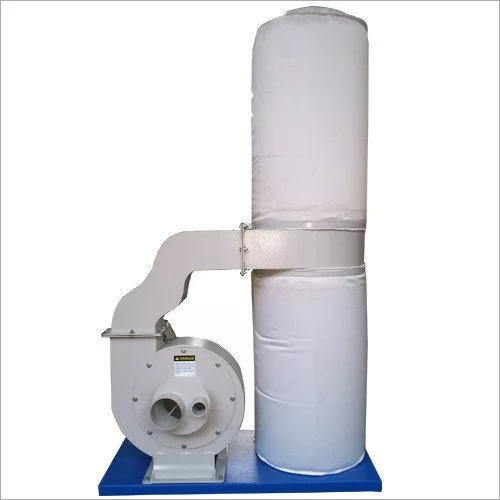Wood Dust Collector
Home / Products / Dust Collector Manufacturers/ Wood Dust Collector
Wood Dust Collector Manufacturer
A wood dust collector is a specialized type of dust collection system designed specifically for capturing and removing sawdust, wood chips, and other wood particles generated during woodworking operations. Here’s a detailed overview of wood dust collectors:
Working Principle
- Inlet: Sawdust-laden air enters the wood dust collector through one or more inlet ports connected to woodworking machines such as table saws, routers, planers, and sanders.
- Capture and Filtration: As the air passes through the collector, wood dust particles are captured by the filtration media, while the cleaned air is vented out through an exhaust port or duct.
- Collection: The captured wood dust accumulates in the collection bin or drum located at the base of the dust collector, where it can be easily emptied and disposed of.
- Filtration: The filtered air, now free of wood dust particles, can be recirculated back into the workspace or directed outside the building through an exhaust system.

Wood Dust Collector Manufacturer
Features of Wood Dust Collector
- High-Capacity Collection: Wood dust collectors typically have large collection bins or drums to accommodate the high volume of sawdust and wood particles generated during woodworking tasks.
- Powerful Suction: They are equipped with powerful motors and fans to provide strong suction and airflow necessary for effectively capturing wood dust from various woodworking machines and processes.
- Filtration System: Wood dust collectors often feature efficient filtration systems, such as pleated cartridge filters or filter bags, to capture fine wood dust particles and prevent them from re-entering the workspace.
- Multiple Inlets: Many wood dust collectors have multiple inlet ports, allowing them to connect to several woodworking machines simultaneously for efficient dust collection.
- Automatic Cleaning Mechanisms: Some models incorporate automatic filter cleaning mechanisms, such as pulse-jet or reverse airflow systems, to periodically clean the filters and maintain optimal airflow and filtration efficiency.
- Durable Construction: Wood dust collectors are typically constructed of heavy-duty materials, such as steel or aluminum, to withstand the rigors of woodworking environments and prolonged use.
- Portability: Certain wood dust collectors are designed to be portable, featuring wheels or handles for easy maneuverability between different workstations or job sites.
Applications of Wood Dust Collector
- Woodworking Shops: Wood dust collectors are commonly used in woodworking shops, carpentry shops, and furniture manufacturing facilities to capture sawdust and wood particles generated during cutting, sanding, routing, and shaping operations.
- Cabinet Making: They are utilized in cabinet making shops and millwork facilities to control wood dust emissions during the fabrication and assembly of cabinets, doors, and other wooden products.
- Joinery and Carpentry: Wood dust collectors are essential in joinery workshops and carpentry businesses for dust control during the construction of wooden structures, frames, and architectural components.
- Woodturning: They are employed in woodturning shops and lathe operations to capture wood chips and dust produced during the turning and shaping of wooden objects such as bowls, spindles, and furniture legs.
Benefits of Wood Dust Collector
- Improved Air Quality: By capturing and removing wood dust particles from the air, wood dust collectors help improve indoor air quality and reduce the risk of respiratory issues and allergies among workers.
- Enhanced Safety: They contribute to a safer work environment by reducing the accumulation of wood dust on floors, surfaces, and machinery, thereby minimizing the risk of slips, trips, falls, and equipment malfunctions.
- Equipment Protection: Wood dust collectors help prolong the life of woodworking machinery and tools by preventing dust buildup and contamination, resulting in reduced maintenance costs and downtime.
- Regulatory Compliance: They assist woodworking businesses in complying with occupational health and safety regulations and environmental standards governing dust control and air quality.
Considerations
- Filter Maintenance: Regular cleaning and replacement of filters are essential to ensure optimal performance and prevent clogging or reduced airflow in wood dust collectors.
- System Design: Proper sizing and layout of the dust collection system are critical to ensure adequate airflow and suction at each woodworking machine and workstation.
- Noise Levels: Some wood dust collectors can produce noise during operation, so noise reduction measures may be necessary, especially in noise-sensitive environments.
- Static Pressure Loss: Consider the static pressure loss across the dust collection system and its impact on overall system performance, especially when connecting multiple woodworking machines to a centralized dust collector.
- Material Compatibility: Ensure that the construction materials of the wood dust collector are compatible with the handled wood species and processing conditions to prevent corrosion or damage.
